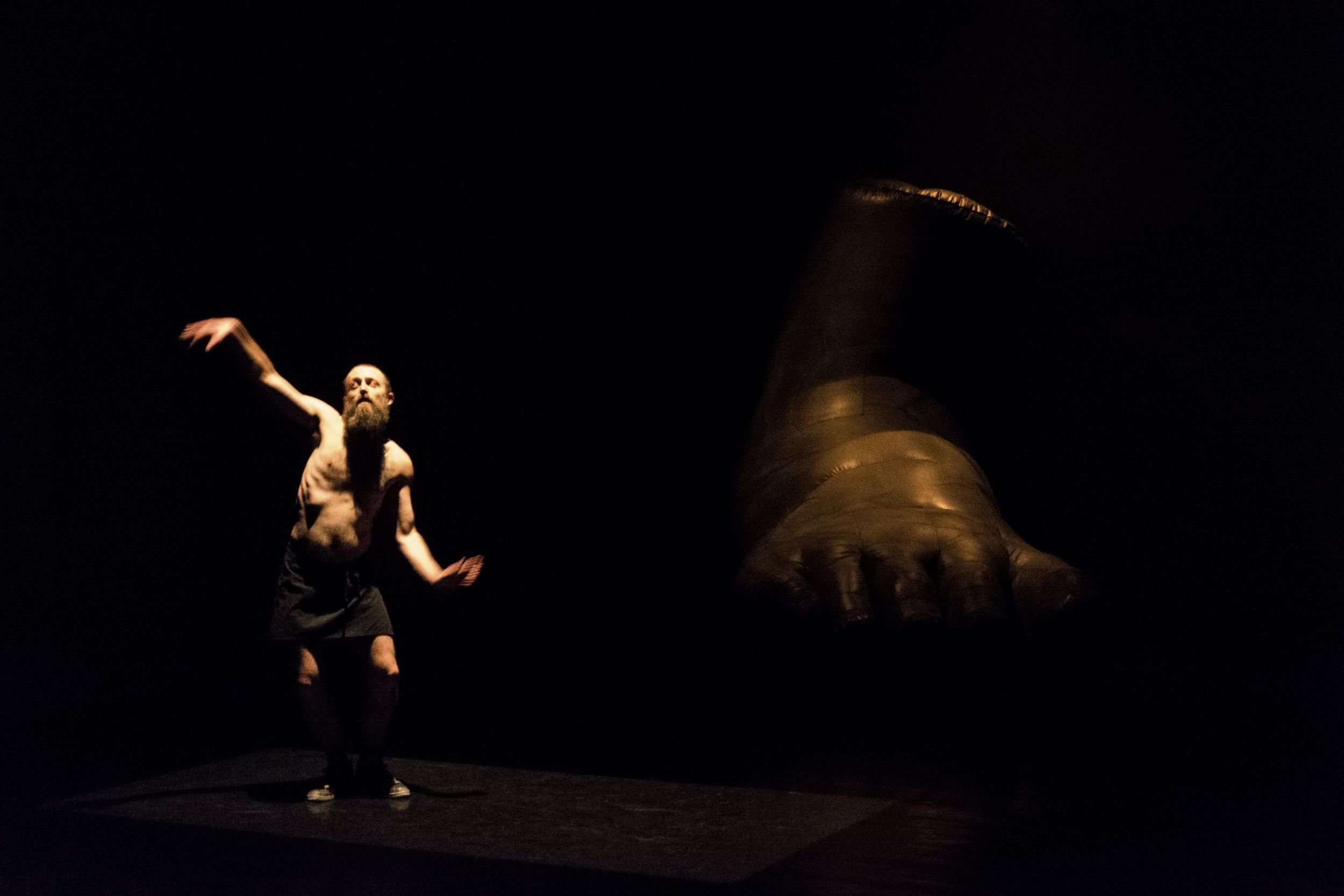Flip Side: Visualizing the Woman I Want to Become in the Mirror
At the origin of this solo is a meme, which I randomly gleaned on social media and which became a recurring message in my online communication with Rachel, as a humorous way to channel our anger in the face of situations that upset us. The meme, which gives the title to this solo, depicts a feminine looking, barbie-like doll, looking at herself in the mirror but it is the face of the terrifying queen of the Alien franchise that appears as her reflection. This solo embraces the stigma of the mad, angry woman trope, turning it around with bravura, poetic precision and rigorous composition in the shape of an operatic choreography.
CREDITS
Choreography: Frédéric Gies
Dance: Rachel Tess
Date & Time: Sunday 27 April 2025, 16.00–17.00
Place: Milvus Artistic Research Center (MARC), Parkgatan 7, Knisslinge, Sverige
Part of MARC HOUSEWARMING PARTY
No pre-registration is required. The event is cost free / donation-based (pay what you can upon arrival).
Milvus Artistic Research Center (MARC)
MARC is a hub for creation and exchange that actively fosters a dialogue between theory and practice, creativity and knowledge, and artists and communities through investigation in the field of performance. By pairing artists with mentors, colleagues, and the public, we aim to address the need for a platform where critical discourse is encouraged and cultivated. Our yearly programming includes workshops, sharing sessions, flag raisings, exhibitions, public interventions, dialogues, filmmaking, and performances. We strive to support our artists, partners, and network long-term, deepening our practice and engagement as an artist-driven organization to create sustainable pathways for independent and self-producing artists, artistic experimentation, and the community at large. Read more
About the project Flip Side
Flip side is a series of ten solos created with and for dancer Rachel Tess between 2024-2027, by contemporary choreographers in Sweden and abroad. Commissioned by Tess as a dance anthology, the title refers to the ‘flip side’ or less hyped ‘B-side’ of a record. Since 2013, Tess has created work from deep in the Skanian countryside with a focus on site responsive works, people, and place rather than commercial success. Each edition of Flip side is crafted to showcase her skills as a maturing performer, unearthing an artistry accrued over a long career in dance.
About Rachel Tess
Rachel Tess (b. 1980) is an American dancer and choreographer based in Sweden and is the director of Milvus Artistic Research Center (MARC) in Knislinge. She holds a BFA from The Juilliard School (2004) and has danced with Les Grands Ballets Canadiens, GöteborgsOperans Danskompani, and Cullberg Ballet.
She earned an MA in choreography from DOCH in 2013 and has presented works in Sweden, Montréal, New York, and Costa Rica. Her project Souvenir, a mobile choreographic architecture, was exhibited at Wanås Konst in 2014. Since 2010, she has collaborated with Benoît Lachambre as a performer and co-creator.
Tess has choreographed performances for Corpus, Dansk Danseteater, Norrdans, and Skånes Dansteater. In 2019, she received the Birgit Cullberg Award for her work with MARC and Any number of sunsets…, exploring new spaces for dance. In 2023, she was awarded Region Skåne’s Culture Prize for her innovative work in dance.
She has worked with choreographers such as Peter Mills, Tim Matiakis, and Anna Pehrsson and was the associate curator for performance at Wanås Konst (2016–2022). She teaches over 500 school children annually in Knislinge and researches experimental performance in rural areas. She also holds a ten-year working grant from the Swedish Arts Grants Committee.
About Frédéric Gies
Frédéric Gies is a dancer and choreographer based in Malmö. Oscillating between clockwork composition and the intensities and chaos generated by dancing bodies surrendering to the desires and forces that traverse them, their dance pieces bring to the forefront the capacity of dance to speak independently from language. Drawing from their former training in ballet, their encounter with specific trends of contemporary dance at the beginning of the 90s, their dance floor experiences in techno clubs and raves and their study of somatic practices, they approach forms as possibilities rather than constraints. Recycling and perverting dance history and heritages, their dances weld forms seemingly foreign to each other. They playfully collapse the distinction and hierarchies between erudite and popular forms of dance. In their pieces, bodies as the instigators of movement don’t reinforce identities but excavate the complexity of their layers.
Since 1996, they have created more than 30 performances, including commissions by Weld Company, DDSKS and Corpus. They present their works locally, regionally, nationally and internationally in various contexts, including dance venues and festivals, music festivals and museums (amongst others: Weld, Inkonst, Skogen, Dansens Hus, Impulstanz, CTM festival, Sophiensaele, Serralves, Roskilde festival, RAS, Moving in November, Wanås Konst, Zürich Moves, La Casa Encendida, Art Stations Foundation, Tanzhaus NRW...). So far, they have presented their work in 21 countries. They also had an extensive career as a dancer, working with Daniel Larrieu, Olivia Grandville, Ania Nowak and Cristina Caprioli, amongst others. They also teach in various contexts, including at university level. They have been the head of programme of the MA in choreography at DOCH-SKH. In 2021, together with Anne Juren, they were the mentor at DanceWEB. Their practice Technosomatics, which they started to share in 2014, has encountered a broad echo.


